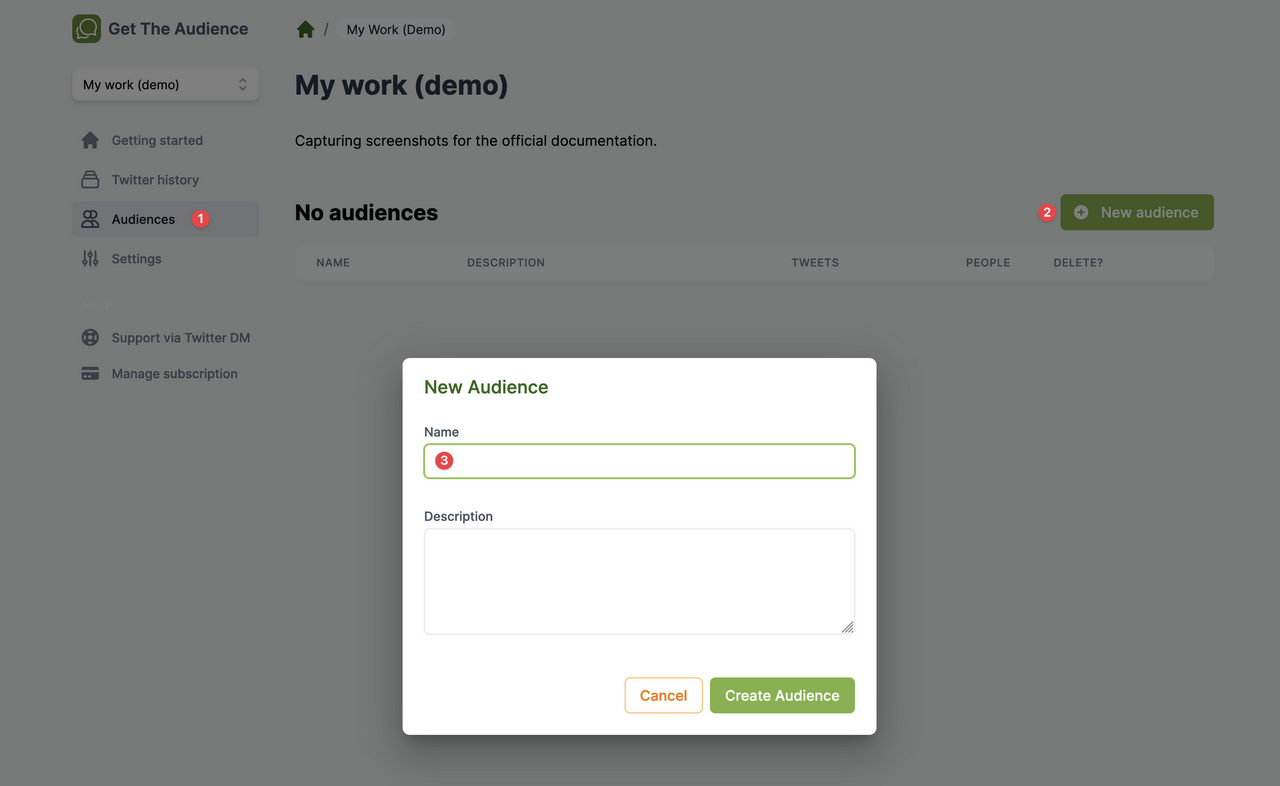Creating an audience
An audience is a group of people who have a conversation with each other, therefore they automatically have something in common.
You can create an audience, using these steps:
- In the menu on the left, click on
Audiences - Click the button
New audience - Enter a
nameand a shortdescriptionof the audience, then confirm withCreate audience.

Sending an elf to import tweets for you#
The audience looks still empty. Fill it with their conversations by sending an elf to listen for you on Twitter:
- Click
Send first elf to listen - Enter the name of a Twitter handle in the input field
- Choose whether the elf should import tweets
from,to, and/ormentioningthis Twitter handle - Confirm with
Import those tweets.

The elf will work in the background, possibly for several minutes. The audience on your screen will update itself regularly while the elf is running.
caution
You can commission more than one elf to import tweets into the same audience. However, you should do this only if the other people have a conversation with the same people. If you import totally unrelated tweets, your data will become diluted and less meaningful.
It is better to create separate audiences for unrelated Twitter accounts.
Which audiences you should create first#
tip
The easiest thing to begin with is your own audience, i.e. you enter your own Twitter handle in the input field for the elf.
Another good idea is to create one audience for each competitor of yours. When you listen there, you might discover problems that you can solve better than your competitors.
An advanced idea is to create one audience for each person or company who makes things that your audience is using. Example: If you want to create a product for bloggers, enter @iAWriter or @Wordpress. The idea behind this is: Bloggers use iAWriter or Wordpress, so they might flock around these two. This makes it likely that you can find and meet them there.
More advanced ideas:
- one audience for each publication they read
- one audience for each conference they attend
- one audience for each author they read
- anyway, one audience for each person or thing your audience might be interested in